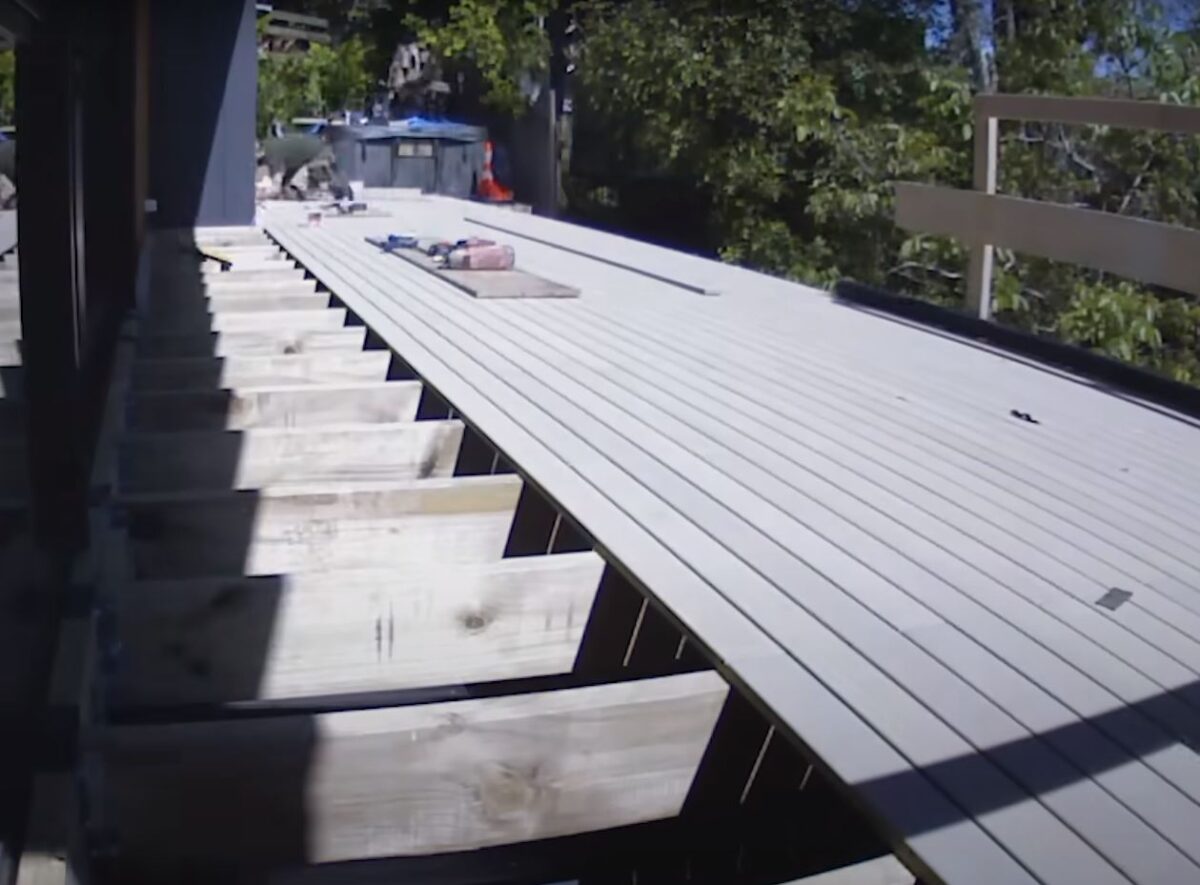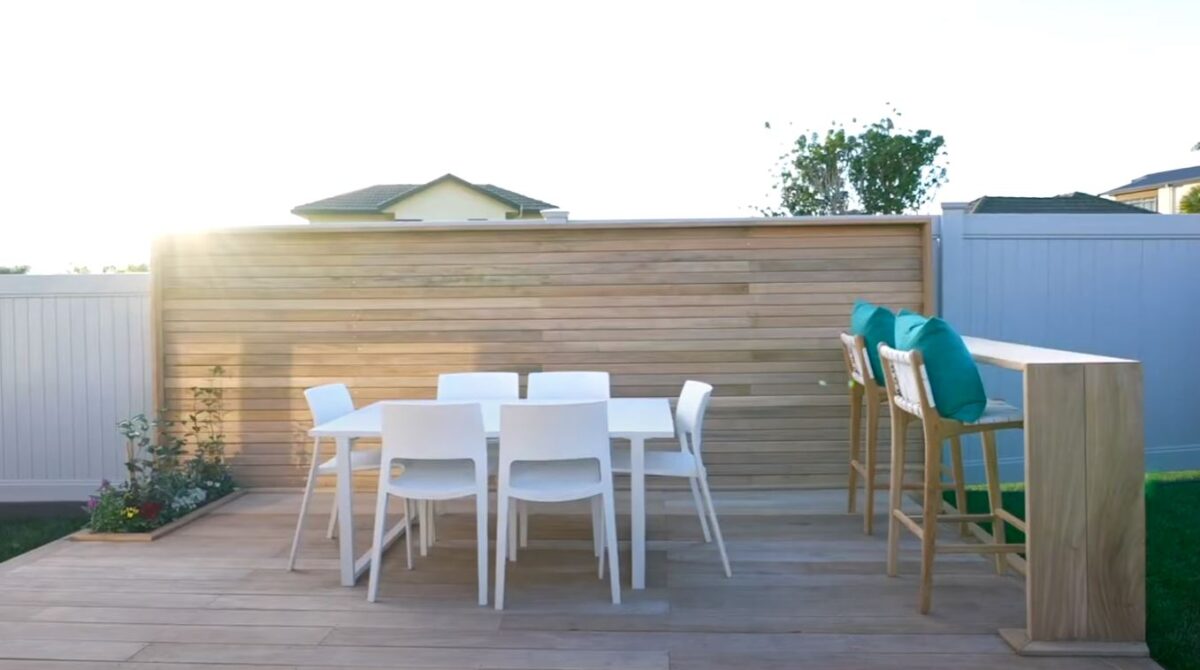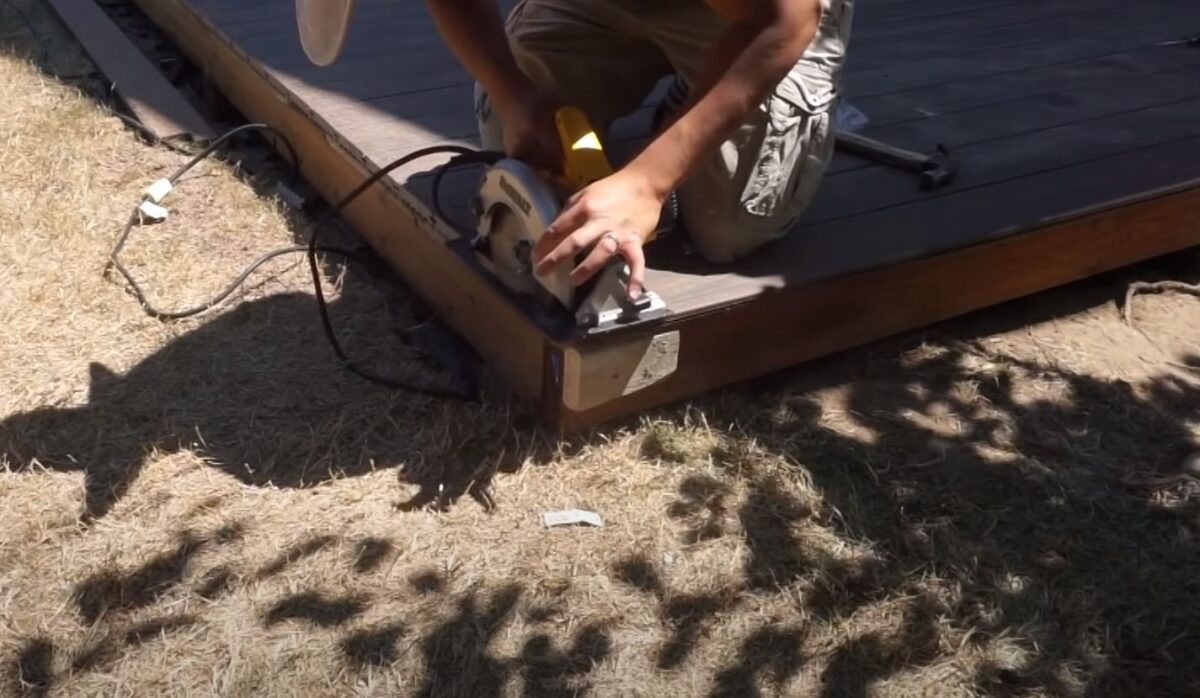The Basics of Deck Design
Building a deck is more than just an aesthetic enhancement for your Auckland home; it’s an extension of your living space. Whether you’re nestled in the heart of Ponsonby or enjoying the coastal views of Mission Bay, the design of your deck should harmonise with the style and layout of your home, while also accommodating the specific needs of your family.
Material Matters
When building a deck in Auckland, the choice of material plays a pivotal role in the structure’s durability, aesthetics, and maintenance requirements. Auckland’s diverse weather, coupled with individual style preferences and budget constraints, makes this decision even more crucial. Here’s an in-depth look into the commonly used decking materials:
Hardwood:
Popular choices include kwila, garapa, and jarrah.
- Advantages:
-
- Durability: These woods possess natural resilience against pests and decay.
- Aesthetics: Hardwoods often sport rich colours and grain patterns, lending a luxurious touch to decks.
- Longevity: With proper care, hardwood decks can last for decades.
- Disadvantages:
-
- Cost: Hardwoods generally command a higher price tag compared to other materials.
- Maintenance: They might require periodic oiling or staining to retain their lustre.
- Environmental Concerns: Ensure the hardwood is sourced sustainably, as some species might be endangered.
- Cost Consideration: While the initial investment is higher, considering the long lifespan and minimal replacements, hardwoods can be cost-effective in the long run.
Softwood (Treated Pine):
A more budget-friendly option, treated pine is another popular choice in Auckland.
- Advantages:
-
- Cost-Effective: Generally more affordable than hardwoods or composites.
- Flexibility: Easier to cut and shape, allowing for more intricate designs.
- Treatability: Can be stained or painted in a myriad of colours.
- Disadvantages:
-
- Durability: Not as resilient as hardwoods, especially if not adequately treated.
- Maintenance: Requires regular sealing and protection against moisture and pests.
- Cost Consideration: Ideal for homeowners on a tighter budget but remember to factor in potential increased maintenance costs.
Composite Decking:
Constructed from a mix of wood fibres and plastics, composite decking is gaining traction in suburbs like Parnell for its contemporary appeal.
- Advantages:
-
- Low Maintenance: Resistant to fading, staining, and rotting.
- Consistent Appearance: Offers a uniform look without the natural imperfections of wood.
- Eco-friendly: Often made from recycled materials, making it a sustainable choice.
- Disadvantages:
-
- Cost: Typically more expensive than treated pine.
- Heat Retention: Can get hot under direct sunlight, making it uncomfortable to walk on during peak summer.
- Weight: Heavier than wood, which might necessitate additional structural support.
- Cost Consideration: While the upfront cost is higher, savings in maintenance and potential long lifespan make composite decking an investment to consider.
Navigating the Permit Process
Building a deck in Auckland is not just about selecting the right materials and design. It’s also crucial to ensure that the deck is compliant with local regulations. If you’re adding a deck to your Remuera bungalow or your Ponsonby villa, understanding the permit process is essential to avoid potential pitfalls and legal issues.
Determining the Need for a Permit:
Not every deck in Auckland requires a building permit. Several factors come into play:
- Height: Decks over a certain height (usually 1.5 metres above the ground) will likely require a permit.
- Location: Proximity to boundaries or protected areas can influence the necessity for a permit.
- Size: Larger decks might cross a threshold where a permit becomes mandatory.
Pre-application Research:
Before you apply:
- Zoning Laws: Auckland is divided into various zones, each with its regulations. Understand what’s allowed in your particular zone.
- Heritage Listings: Some areas or houses, especially in suburbs like Devonport, may have heritage restrictions. Such listings might have specific requirements or even prohibit certain types of structures.
Documentation:
To apply for a permit, you’ll typically need:
- Plans: Detailed drawings of the deck, including measurements, materials, and its relation to existing structures.
- Site Plan: Show the deck’s location in relation to property boundaries, other buildings, and significant landscape features.
- Engineer Reports: Depending on the deck’s complexity or location, you might need an engineer’s assessment.
Application Process:
Once you have the necessary documents:
- Submission: Lodge your application with the Auckland Council.
- Review: The council will review your application, which can take several weeks. They might ask for additional information or clarifications.
- Inspections: Even after securing a permit, expect periodic inspections during construction to ensure adherence to approved plans and safety standards.
Potential Challenges:
Navigating the permit process can come with challenges:
- Delays: Especially during peak times, the council can be backlogged, leading to extended review periods.
- Revisions: You might be asked to modify your plans to accommodate specific regulations or concerns.
- Fees: There’s a cost associated with obtaining a permit, and it can vary based on the deck’s size and complexity.
Engaging Experts:
While it’s possible to manage the permit process yourself, many homeowners find it easier and more efficient to engage experts. Companies like Quality Fencing Auckland often have experience with the permit process and can provide invaluable guidance, ensuring your deck is not only beautiful and functional but also fully compliant with Auckland’s regulations.
Budgeting and Costs
Budget considerations are paramount. Deck building in Auckland can vary in price depending on size, materials, and design intricacies. Getting multiple quotes and ensuring they include all costs, from design, materials, to labour, can provide a more transparent picture of your investment. Remember, sometimes investing a bit more initially can offer long-term savings through durability and lesser maintenance.
Safety First
One cannot stress the importance of safety enough, especially with deck construction. Secure railings are a must, especially if your deck is off the ground. It’s crucial to ensure that all materials are treated appropriately to resist Auckland’s humid weather, reducing the risk of rot or structural instability.
Potential Challenges
As with any construction project, building a deck in Auckland comes with its unique set of challenges. The land in areas like Mission Bay might be more sloped, requiring additional groundwork or support. Then, there’s the ever-unpredictable Auckland weather which can cause construction delays. Choosing a reputable company, like Quality Fencing Auckland, can mitigate many of these challenges with their local expertise.
Regular Maintenance
Maintaining your deck is crucial for its longevity. Regular cleaning, sealing (for timber decks), and checking for any signs of wear or damage should be on every homeowner’s checklist. With Auckland’s occasional rainfall, ensuring proper water drainage and avoiding water pooling will also be vital.
When to Seek Expertise
Building a deck is an ambitious project. While DIY can be tempting, seeking professional guidance ensures the safety, durability, and quality of the finished product. If you reside in an area like Ponsonby, with its blend of heritage and modern homes, having an expert who understands the local nuances can be invaluable. It’s where entities like Quality Fencing Auckland come into play, offering expertise, quality materials, and craftsmanship tailored to your deck installation Auckland needs.
In Summary
Building a deck in Auckland isn’t just about adding an outdoor space; it’s about enhancing your living experience. By considering the design, materials, safety protocols, and local challenges, Aucklanders can enjoy a seamless deck-building process, especially when backed by local professionals with a proven track record.
5 Common Mistakes When Building a Deck in Auckland
- Overlooking the Importance of Ground Preparation:
Before laying any deck foundation, the ground must be adequately prepared. Especially in suburbs like Mount Eden, with its undulating terrains, ensuring a level foundation is crucial. Many overlook this step, leading to future issues like sagging or instability. - Ignoring Local Climate and Weather Conditions:
Auckland’s maritime climate means frequent rains and humidity. Selecting materials that aren’t suited for this environment or failing to treat them can result in rapid deterioration. It’s not uncommon to see decks in coastal suburbs like Takapuna suffering from premature wear due to salt and moisture if not appropriately treated. - Not Planning for Future Modifications:
Homeowners often envision a simple deck, but later decide they’d like to add features like a pergola, outdoor kitchen, or hot tub. Not structuring the initial deck to handle these potential additions can result in costly modifications or safety concerns. - Incorrect Spacing and Sizing:
Decks need to breathe. Incorrect spacing between boards can trap moisture, leading to rot, mould, or warping. Likewise, using unsuitable fasteners or incorrectly sizing support beams can compromise the deck’s structural integrity, especially under the weight of gatherings or furniture. - Skimping on Professional Expertise:
In the quest to save costs, some Aucklanders might choose the DIY route or opt for cheaper, less experienced contractors. The outcome can be a deck that doesn’t adhere to safety standards or local building codes. Engaging reputable experts, like those from Quality Fencing Auckland, can be an investment in the deck’s longevity, safety, and aesthetics.



